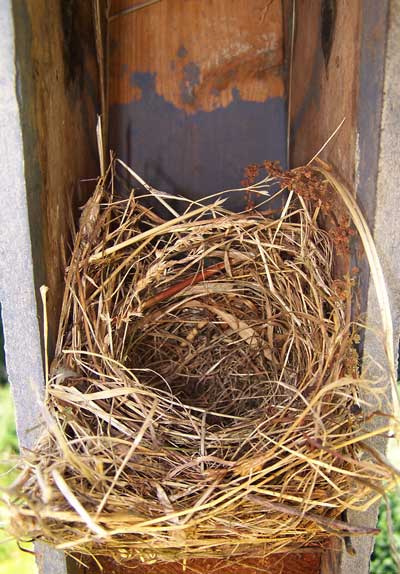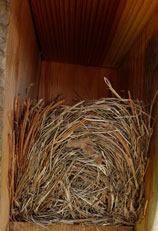|
|
To see other cavity nester bios/photos:
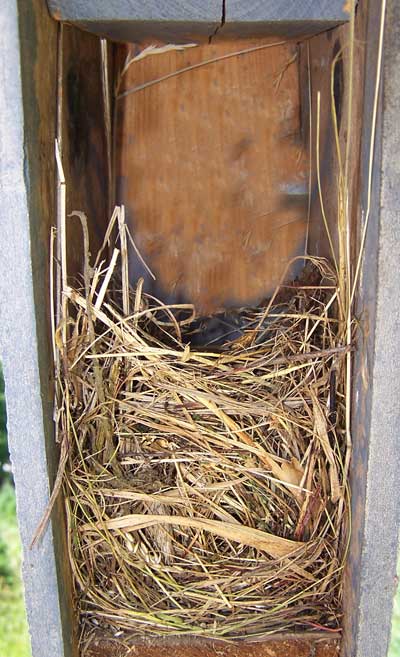 |
Typical Bluebird Nest Description: Neat, cup shaped, woven nest typically 100% fine grass or pine needles. Cup may be in the back of the box. Occasionally bits of fur or a few feathers, or even some hair (e.g., from a horse). Fairly deep, often cylindrical nest cup – usually 3-4″ deep, with the cup portion 2.5″ in diameter and about 2.25″ deep.
The nest on the left is in a Peterson box. It is messier than what I usually see. The nest below is in a small NABS box, and contains a lot of White Pine (Pinus strobus) needles. |
||
|---|---|---|---|
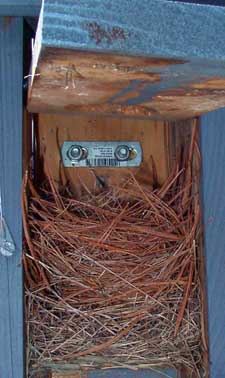 |
|||
|
|
Notice the cup is deep, and more neatly woven than the rest of the nest.
Usually bluebird nests do not have seedheads (more typical of House Sparrow nests) but this is for a second brood and may have been built in a hurry. See photos of some unusual bluebird nests made with cattails and maple seeds. |
||
| The photo below shows the shape of the cup. Photo by Jeff Kellogg. | |||
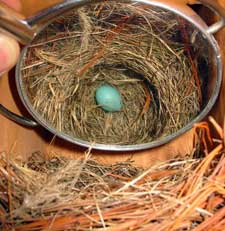 |
|||
| In a taller nest (e.g., in a box that has not been cleaned out) Keith Kridler found that bluebirds may be more likely to build the nest cup towards the back of the box, furthest from the entrance hole. | |||
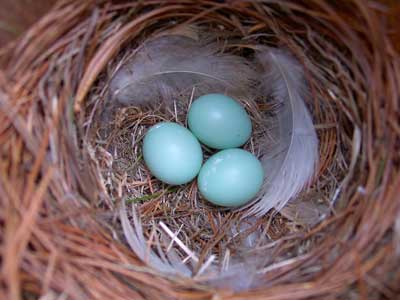 |
Bluebird Eggs are powder blue (no dark spots), sometimes white. It is not common to have feathers in a bluebird nest, but this one had a few. The swoopy nest to the right has a leaf in it which may have been stuck to the mix of pine needles and grass used. |
|
|
 |
The young inside the eggs in the front and the lower right are both pipping. Photo by Keith Kridler. Star shaped dimples are visible as the occupant pushes through the shell.
The fourth egg on the far right will not hatch. The liquid line and air are visible on the large end of the egg. If a baby were formed inside, it would be filling up the whole egg by this point. |
||
 |
Newly hatched bluebirds look like hairy shrimp. Usually any eggs that are fertile will hatch within 24 hours of each other.
See day by day photos of nestling development. |
||
 |
A nestcam on a completed bluebird nest in a Gilwood Box. | ||
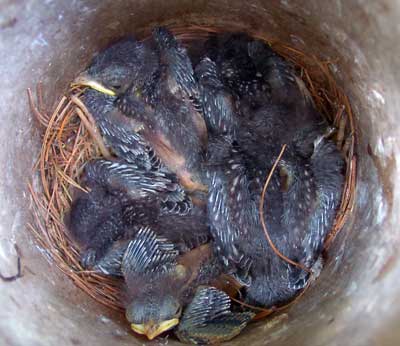 |
After the nestlings are 12 days old (and bright blue feather sheaths show up on males) you should stop actively monitoring the nest, as disturbance could cause premature fledging.
After fledging, the nest cup is usually flattened, but clean (no fecal material.) Another bluebird nest in a NABS box is shown below, using both pine needles and grass. |
||
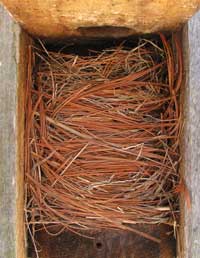 |
|||
 |
Female getting ready to fledge. Photo by Keith Kridler. Notice white eye ring, rictal bristles (above beak) and spotted breast. Below, another EABL nest in a Peterson box, Zimmerman photo. | ||
 |
|||
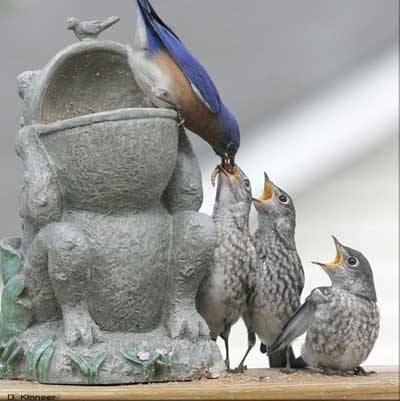 |
Fledglings remain dependent on their parents for about a month. Photo on left by Dave Kinneer. Photo of Eastern Bluebird nest below by Meg Chartier of CT. | ||
 |
|||
What a divine experience it is to watch and be a small part of this!
– Ron (Bluebird Listserv), 2005

